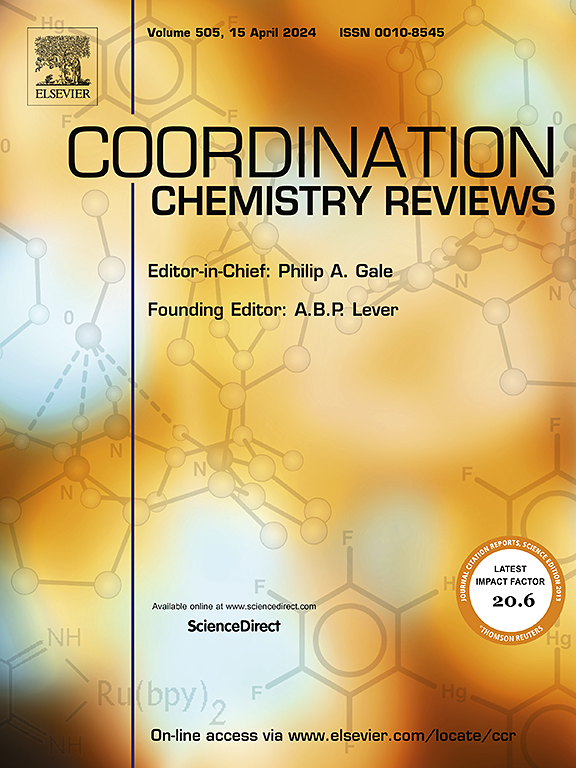Exploring cellular dynamics: Engineered fluorescent carbon dots for organelle staining and cellular response analysis
IF 20.3
1区 化学
Q1 CHEMISTRY, INORGANIC & NUCLEAR
引用次数: 0
Abstract
Live cell staining that is vital for comprehensive study of cellular organelles under various conditions demands labeling agents that are highly specific, biocompatible, stable, and sensitive. Fluorescent carbon dots (CDs), with advantages of ease in synthesis, notable biocompatibility, exceptional photostability, and tunable fluorescence properties, have emerged as superior candidates for both live cell staining and in vivo imaging. The efficacy of CDs is significantly influenced by their core crystallinity, surface defect and functional groups, recognizing moieties, emissive molecular states, size, and charge, making these parameters critical for optimal organelle staining. This review article delves into the fluorescence and functional properties of CDs, underpinning their development for use in live cell and in vivo imaging systems that offer unparalleled specificity, sensitivity, and efficiency. We highlight the applications and advantages of CDs, their role in transcending the limitations of traditional staining dyes, and their utility in targeting various live organelles. Additionally, we explore the mechanisms behind their fluorescence and discuss strategies for tuning their emission wavelengths. The exploration of cellular dynamics and analysis of cellular responses facilitated by CDs ushers in new opportunities for comprehending cellular mechanisms. The capacity of CDs for real-time monitoring provides extraordinary insights into how cells respond to external stimuli, highlighting the transformative potential of CDs in advancing cellular biology and medical diagnostics.

求助全文
约1分钟内获得全文
求助全文
来源期刊

Coordination Chemistry Reviews
化学-无机化学与核化学
CiteScore
34.30
自引率
5.30%
发文量
457
审稿时长
54 days
期刊介绍:
Coordination Chemistry Reviews offers rapid publication of review articles on current and significant topics in coordination chemistry, encompassing organometallic, supramolecular, theoretical, and bioinorganic chemistry. It also covers catalysis, materials chemistry, and metal-organic frameworks from a coordination chemistry perspective. Reviews summarize recent developments or discuss specific techniques, welcoming contributions from both established and emerging researchers.
The journal releases special issues on timely subjects, including those featuring contributions from specific regions or conferences. Occasional full-length book articles are also featured. Additionally, special volumes cover annual reviews of main group chemistry, transition metal group chemistry, and organometallic chemistry. These comprehensive reviews are vital resources for those engaged in coordination chemistry, further establishing Coordination Chemistry Reviews as a hub for insightful surveys in inorganic and physical inorganic chemistry.
 求助内容:
求助内容: 应助结果提醒方式:
应助结果提醒方式:


